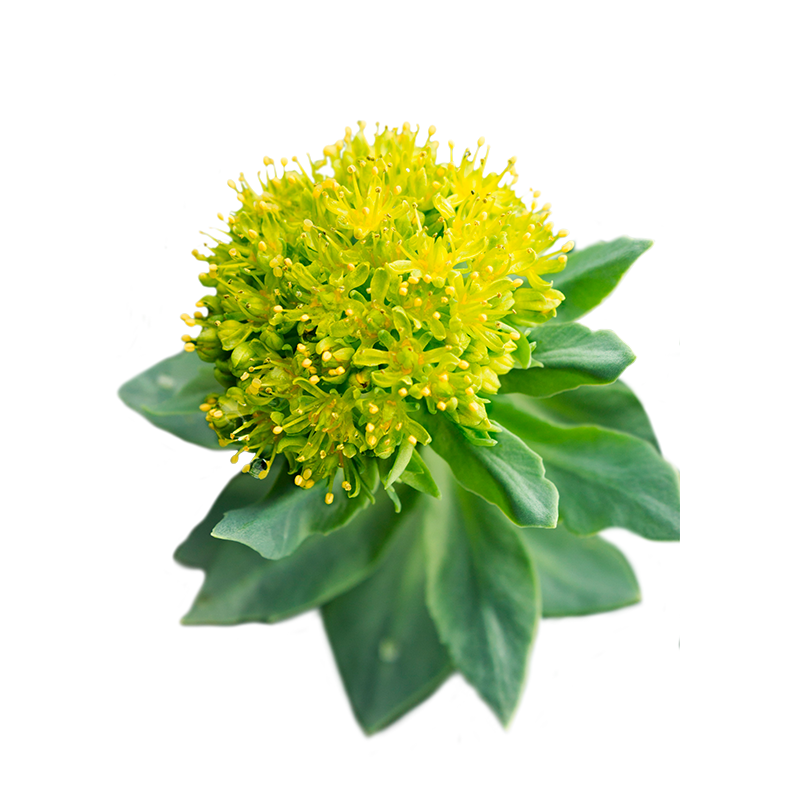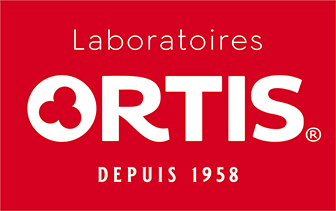
Rhodiola
Latin name
Origin
Used part
Active components
Salidroside, Rosavins: these components have proven antidepressant, anxiolytic, adaptogenic, neurovascular protective and antifatigue properties.
p-Tyrosol: an antioxidant that is also found in olive oil.
Phenols: contribute to the antioxidant action.
Usage
Bibliographical references
- Effects of alcohol aqueous extract from Rhodiola rosea L. roots on learning and memory.
Petkov VD, Yonkov D, Mosharoff A, Kambourova T, Alova L, Petkov VV, Todorov I.
Acta Physiol Pharmacol Bulg. 1986;12(1):3-16.
Pubmed: http://www.ncbi.nlm.nih.gov/pubmed/3751623 - A pilot study of Rhodiola rosea (Rhodax) for generalized anxiety disorder (GAD).
Bystritsky A, Kerwin L, Feusner JD.
J Altern Complement Med. 2008 Mar;14(2):175-80.
http://www.ncbi.nlm.nih.gov/pubmed/18307390 - Effects of Rhodiola rosea L. extract on behavioural and physiological alterations induced by chronic mild stress in female rats.
Mattioli L, Funari C, Perfumi M.
J Psychopharmacol. 2009 Mar;23(2):130-42.
http://www.ncbi.nlm.nih.gov/pubmed/18515456 - Comparative study of Rhodiola preparations on behavioral despair of rats.
Panossian A, Nikoyan N, Ohanyan N, Hovhannisyan A, Abrahamyan H, Gabrielyan E, Wikman G.
Phytomedicine. 2008 Jan;15(1-2):84-91.
http://www.ncbi.nlm.nih.gov/pubmed/18054474 - [Plasma beta-endorphin and stress hormones in stress and adaptation].
[Article in Russian]
Lishmanov IuB, Trifonova ZhV, Tsibin AN, Maslova LV, Dement'eva LA.
Biull Eksp Biol Med. 1987 Apr;103(4):422-4.
http://www.ncbi.nlm.nih.gov/pubmed/2952180 - [The cardioprotective and antiadrenergic activity of an extract of Rhodiola rosea in stress].
Maslova LV, Kondrat'ev BIu, Maslov LN, Lishmanov IuB.
Eksp Klin Farmakol. 1994 Nov-Dec;57(6):61-3.
http://www.ncbi.nlm.nih.gov/pubmed/7756969 - Rhodiola rosea in stress induced fatigue--a double blind cross-over study of a standardized extract SHR-5 with a repeated low-dose regimen on the mental performance of healthy physicians during night duty.
Darbinyan V, Kteyan A, Panossian A, Gabrielian E, Wikman G, Wagner H.
Phytomedicine. 2000 Oct;7(5):365-71.
http://www.ncbi.nlm.nih.gov/pubmed/11081987 - Acute Rhodiola rosea intake can improve endurance exercise performance.
De Bock K, Eijnde BO, Ramaekers M, Hespel P.
Int J Sport Nutr Exerc Metab. 2004 Jun;14(3):298-307.
http://www.ncbi.nlm.nih.gov/pubmed/15256690 - Effects of chronic Rhodiola Rosea supplementation on sport performance and antioxidant capacity in trained male: preliminary results.
Parisi A, Tranchita E, Duranti G, Ciminelli E, Quaranta F, Ceci R, Cerulli C, Borrione P, Sabatini S.
J Sports Med Phys Fitness. 2010 Mar;50(1):57-63.
http://www.ncbi.nlm.nih.gov/pubmed/20308973 - A double-blind, placebo-controlled pilot study of the stimulating and adaptogenic effect of Rhodiola rosea SHR-5 extract on the fatigue of students caused by stress during an examination period with a repeated low-dose regimen.
Spasov AA, Wikman GK, Mandrikov VB, Mironova IA, Neumoin VV.
Phytomedicine. 2000 Apr;7(2):85-9.
http://www.ncbi.nlm.nih.gov/pubmed/10839209 - The adaptogens rhodiola and schizandra modify the response to immobilization stress in rabbits by suppressing the increase of phosphorylated stress-activated protein kinase, nitric oxide and cortisol.
Panossian A, Hambardzumyan M, Hovhanissyan A, Wikman G.
Drug Target Insights. 2007;2:39-54.
http://www.ncbi.nlm.nih.gov/pubmed/21901061 - Evaluation of Rhodiola rosea L. extract on affective and physical signs of nicotine withdrawal in mice.
Mattioli L, Perfumi M.
J Psychopharmacol. 2011 Mar;25(3):402-10.
http://www.ncbi.nlm.nih.gov/pubmed/19939867 - [The effect of the preparation rodakson on the psychophysiological and physical adaptation of students to an academic load].
Spasov AA, Mandrikov VB, Mironova IA.
Eksp Klin Farmakol. 2000 Jan-Feb;63(1):76-8.
http://www.ncbi.nlm.nih.gov/pubmed/10763116 - Adaptogenic and central nervous system effects of single doses of 3% rosavin and 1% salidroside Rhodiola rosea L. extract in mice.
Perfumi M, Mattioli L.
Phytother Res. 2007 Jan;21(1):37-43.
http://www.ncbi.nlm.nih.gov/pubmed/17072830 - Adaptogens stimulate neuropeptide y and hsp72 expression and release in neuroglia cells.
Panossian A, Wikman G, Kaur P, Asea A.
Front Neurosci. 2012;6:6.
http://www.ncbi.nlm.nih.gov/pubmed/22347152 - Rhodiola rosea as antioxidant in red blood cells: ultrastructural and hemolytic behaviour.
Battistelli M, De Sanctis R, De Bellis R, Cucchiarini L, Dachà M, Gobbi P.
Eur J Histochem. 2005 Jul-Sep;49(3):243-54.
http://www.ncbi.nlm.nih.gov/pubmed/16216810 - Protection by Salidroside against Bone Loss via Inhibition of Oxidative Stress and Bone-Resorbing Mediators.
Zhang JK, Yang L, Meng GL, Yuan Z, Fan J, Li D, Chen JZ, Shi TY, Hu HM, Wei BY, Luo ZJ, Liu J.
PLoS One. 2013;8(2):e57251.
http://www.ncbi.nlm.nih.gov/pubmed/23437352 - Salidroside attenuates beta amyloid-induced cognitive deficits via modulating oxidative stress and inflammatory mediators in rat hippocampus.
Zhang J, Zhen YF, Pu-Bu-Ci-Ren, Song LG, Kong WN, Shao TM, Li X, Chai XQ.
Behav Brain Res. 2013 May 1;244:70-81.
http://www.ncbi.nlm.nih.gov/pubmed/23396166 - Neuroprotective effects of Salidroside and its analogue tyrosol galactoside against focal cerebral ischemia in vivo and H2O2-induced neurotoxicity in vitro.
Shi TY, Feng SF, Xing JH, Wu YM, Li XQ, Zhang N, Tian Z, Liu SB, Zhao MG.
Neurotox Res. 2012 May;21(4):358-67.
http://www.ncbi.nlm.nih.gov/pubmed/22095090 - Neuroprotective effects of salidroside against beta-amyloid-induced oxidative stress in SH-SY5Y human neuroblastoma cells.
Zhang L, Yu H, Zhao X, Lin X, Tan C, Cao G, Wang Z.
Neurochem Int. 2010 Nov;57(5):547-55.
http://www.ncbi.nlm.nih.gov/pubmed/20615444 - Surface-active properties of lipophilic antioxidants tyrosol and hydroxytyrosol fatty acid esters: a potential explanation for the nonlinear hypothesis of the antioxidant activity in oil-in-water emulsions.
Lucas R, Comelles F, Alcántara D, Maldonado OS, Curcuroze M, Parra JL, Morales JC.
J Agric Food Chem. 2010 Jul 14;58(13):8021-6.
http://www.ncbi.nlm.nih.gov/pubmed/20524658
The health claims that feature on our website in relation to the plants contained in our products are compliant with the list of health claims awaiting final assessment by the Community authorities (cf. website of the European Commission: http://ec.europa.eu/nuhclaims/). However, they may be subject to modification following their assessment by the national competent authorities.
The health claims relating to other nutrients or substances contained in our products that feature on our site are compliant with Regulation No. 432/2012 of the Commission of 16 May 2012 which establishes a list of authorised health claims authorised in relation to food products, other than those in reference to the reduction of the risk of disease as well as community-based development and child health (cf. website of the European Commission: http://ec.europa.eu/nuhclaims/).
 Belgium
Belgium
 Belgique
Belgique  België
België  France
France  Italia
Italia  Portugal
Portugal  España
España  United Kingdom
United Kingdom  Κύπρος
Κύπρος 

